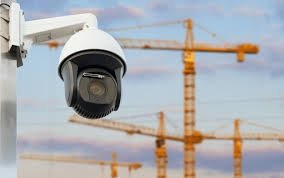
In the fast-paced world of modern construction, maintenance, and industrial inspection, efficiency is everything. Teams must complete tasks quickly and accurately while ensuring safety and minimizing downtime. One of the most impactful tools aiding this transformation is the wireless inspection camera. Whether on a construction site, inside a manufacturing plant, or within a complex plumbing system, these cameras provide unmatched visibility in hard-to-reach spaces, without the limitations of cords or tethered monitors.
The Freedom of Wireless Technology
Unlike traditional inspection tools, wireless inspection cameras eliminate the need for cables that can tangle, limit movement, or cause safety hazards. Workers are free to move around without being physically connected to a screen or power source, allowing them to maneuver the camera into tight or obstructed areas effortlessly. This flexibility significantly reduces the time it takes to complete visual inspections, especially in confined spaces like air ducts, engine compartments, pipelines, and crawl spaces.
Wireless technology also supports real-time streaming to smartphones, tablets, or laptops, making it easier to view and assess footage on the go. This instant access to visuals helps teams make quick decisions, especially when assessing damage or verifying repairs.
Enhancing Accuracy and Reducing Errors
Wireless inspection cameras provide high-resolution images and video, which are critical for identifying structural issues, blockages, corrosion, or mechanical defects. Clear visuals minimize the guesswork, reducing the risk of misdiagnosis and the need for repeat inspections. Many advanced models also include LED lighting, zoom capabilities, and image stabilization features, ensuring the operator gets a comprehensive view even in dark or unstable environments.
Using a borescope camera, technicians can inspect inside walls, machinery, or piping systems without disassembly, saving valuable time and labor. With articulating tips or flexible probes, these devices can navigate complex pathways and transmit clear images back to the user for quick evaluation.
Improving Collaboration and Documentation
In jobsite environments that involve multiple stakeholders—contractors, engineers, inspectors, or clients—wireless inspection cameras simplify collaboration. Since most models connect via Wi-Fi or Bluetooth, footage can be easily shared and stored. This is particularly helpful for documentation, insurance claims, quality control, and compliance reporting.
Real-time streaming also allows off-site teams to participate in the inspection process. For instance, a remote supervisor can provide immediate input based on the live feed, speeding up approvals and reducing the need for unnecessary travel.
Reducing Downtime and Increasing Productivity
Every minute of downtime on a jobsite costs money. Traditional inspection methods often require time-consuming setups, dismantling of parts, or reliance on multiple personnel to operate equipment. Wireless inspection cameras drastically cut down on these inefficiencies.
By reducing the need for invasive inspections or trial-and-error problem solving, workers can identify the root of an issue faster and take corrective action sooner. This not only accelerates project timelines but also minimizes disruptions in operations.
Applications Across Industries
From plumbing and HVAC to aerospace and automotive repair, wireless inspection cameras are invaluable across various industries. For example, electricians use them to inspect wiring behind walls, while plumbers locate blockages in pipes without excavation. In aviation, maintenance crews rely on a borescope camera to check engine turbines for wear or damage without dismantling key components.
No matter the field, the ability to inspect quickly, safely, and accurately using wireless technology streamlines operations and enhances outcomes.
Conclusion
They are the best combination of portability, clarity, and speed, making wireless inspection cameras an essential tool for modern job sites. They empower workers to inspect hidden or hazardous areas with ease, collaborate more effectively, and make faster, more accurate decisions. Whether it’s a flexible borescope camera or a high-end wireless model with real-time video capabilities, investing in this technology is a strategic move toward smarter, safer, and more productive jobsite operations.



